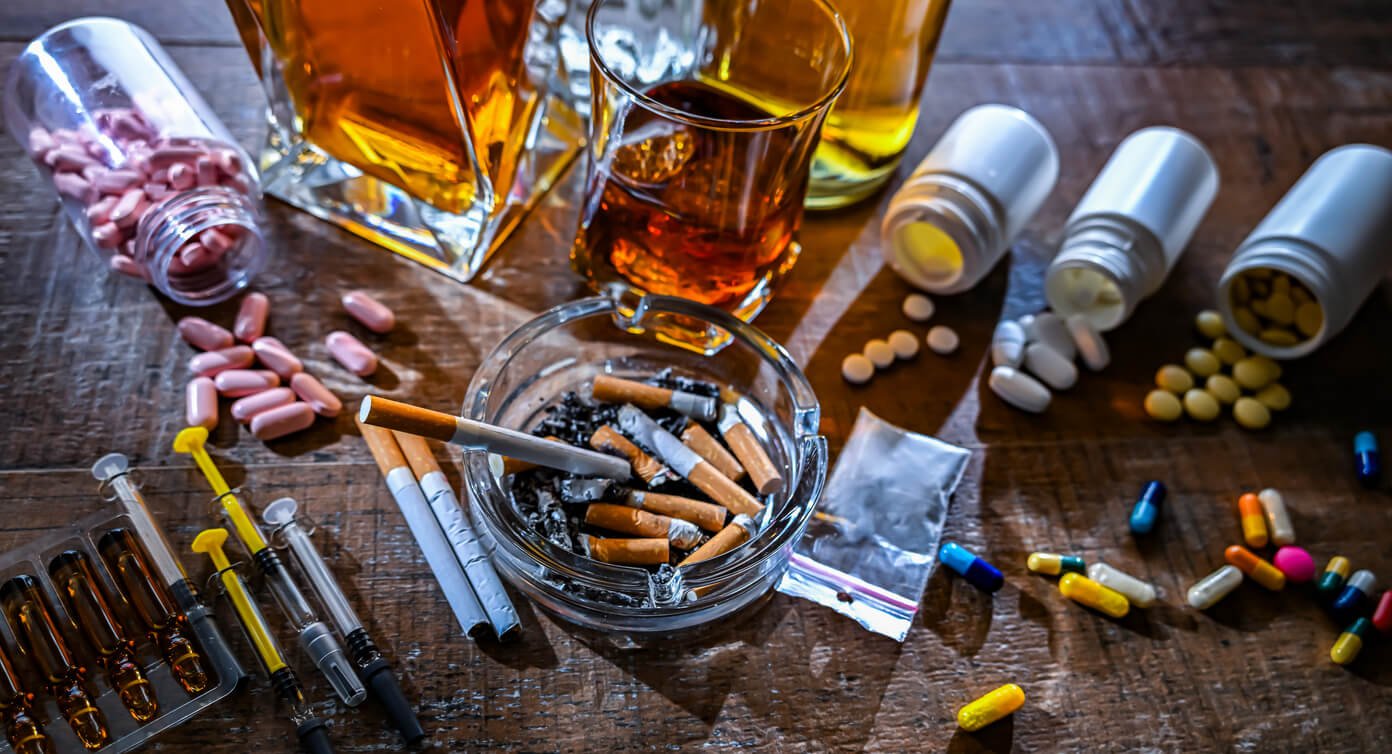What Are Blues Drugs? A Comprehensive Guide
Blues drugs, also known colloquially as “Blues,” refer to a specific category of pharmaceutical and street drugs recognized by their distinctive blue color. These drugs are primarily opioids, with Oxycodone being the most common. The term ‘blues drugs’ refers to prescription painkillers containing oxycodone, including both authentic prescription medications and counterfeit blue pills too, which have a high potential for addiction and carry the risk of uncertain composition and dangerous additives. This article aims to provide a comprehensive understanding of what are Blues drugs are, their historical background, medical uses, potential for abuse, and the psychological and physical impacts of prolonged use.
Historical Background and Evolution
Historical Context
Blues drugs, particularly prescription oxycodone, have a storied history that dates back to the early 20th century. Oxycodone was first developed in 1916 by German scientists as an alternative to morphine, aiming to provide effective pain relief with more potency and fewer side effects. The introduction of OxyContin in the 1990s, a time-release formulation of Oxycodone, marked a significant shift in pain management practices, allowing patients to experience extended pain relief with fewer doses.
Evolution in the Pharmaceutical Landscape
The pharmaceutical landscape saw a surge in the prescription of opioid medications, including Blues drugs, due to their effectiveness in managing chronic pain. However, the aggressive marketing strategies by pharmaceutical companies, particularly Purdue Pharma with OxyContin, led to widespread over-prescription and misuse. This rampant distribution regular use of opioids laid the foundation for the deadly opioid epidemic that the United States continues to grapple with today.
Recreational Use and Street Names
The recreational use of Blues drugs gained traction as users discovered the euphoric effects of these potent opioids. Common street names for Blues include “Blueberries,” “30s,” and “Beans,” reflecting the pill’s appearance and dosage. One of the street names for counterfeit pills resembling prescription oxycodone is “hillbilly heroin,” highlighting the danger of these substances often laced with fentanyl. These drugs became a staple in the illicit drug market, often sold at high prices in counterfeit, due to their demand and highly addictive potential.
Legitimate Medical Uses
Pain Management
Blues drugs are primarily prescribed for managing moderate to severe pain. Conditions such as post-surgical pain, cancer-related pain, and chronic pain syndromes are often treated with prescription medications like Oxycodone due to its efficacy. The extended-release formulations provide continuous pain relief, improving the quality of life for patients dealing with persistent pain disorders.
Mechanisms of Action
Oxycodone, the active ingredient in many Blues drugs, works by binding to opioid receptors in the brain and spinal cord. This action alters the body and perception of pain and produces feelings of euphoria and relaxation. These effects are beneficial in a controlled medical setting but can lead to misuse and addiction when the drug is taken outside prescribed safety guidelines.
Controlled Usage
Medical professionals prescribe prescription drugs like Blues drugs with caution, emphasizing the importance of adhering to dosage instructions to minimize the risk of dependency and side effects. Patients are often monitored closely, and prescriptions for fentanyl are typically limited in duration and quantity to prevent misuse.
Potential for Abuse and Addiction
Factors Contributing to Abuse
The potential for abuse of Blues drugs stems from their potent euphoric effects. The prevalence of counterfeit oxy and pills in the illicit drug market, particularly counterfeit oxycodone pills known as ‘M-30s,’ ‘blues,’ ‘dirty 30’s,’ or ‘Mexies,’ further exacerbates this issue. Users often crush the pills to snort or inject, bypassing the time-release mechanism and experiencing an intense, immediate high. This method of administration significantly increases the risk of overdose and addiction.
Addiction and Dependency
Addiction to Blues drugs develops when the brain becomes reliant on the drug to produce dopamine, the neurotransmitter responsible for pleasure and reward. The dangers of synthetic opioids like fentanyl in counterfeit pills significantly heighten the risk of overdose due to their potency and unpredictable composition. Over time, users require higher doses of cocaine to achieve the same effects, leading to a cycle of drug abuse and dependency. Physical dependency is characterized by withdrawal symptoms such as nausea, muscle pain, and severe cravings when the drug is not taken.
Psychological Impact
The psychological impact of Blues drugs includes mood swings, anxiety, depression, and cognitive impairments. Chronic users often struggle with emotional regulation and experience significant disruptions in their personal and professional lives due to their addiction. The stigma associated with addiction further exacerbates mental health issues, creating barriers to seeking professional help, and support.
Key Takeaways on what are blues drugs:
- Understanding Blues Drugs:
- Blues drugs, predominantly opioids like Oxycodone, are known for their distinct blue color and high addiction potential. Learn about their origins, medical uses, and risks on our blog for in-depth insights.
- Historical Evolution:
- From the early 20th century development of Oxycodone to the aggressive marketing of OxyContin in the 1990s, discover the history and impact of Blues drugs. Our blog dives into the detailed evolution and its repercussions.
- Medical Uses and Risks:
- While Blues drugs effectively manage severe pain, they also pose significant risks for abuse and addiction. Understand the mechanisms, benefits, and potential hazards by visiting our comprehensive articles.
- Signs of Abuse and Addiction:
- Recognize the signs of Blues drug abuse, such as behavioral changes and physical symptoms. Our blog provides resources for identifying and addressing addiction early.
- Treatment and Recovery:
- From detoxification to rehabilitation and long-term management, explore the treatment options available for Blues drug addiction. Check our blog for detailed guides and support resources.

Physical and Psychological Effects of Prolonged Use, Including Respiratory Depression
Physical Health Risks
Prolonged use of Blues drugs, heroin, particularly opioids like Oxycodone, poses significant risks to physical health and mental illness. Counterfeit oxycodone pills, often referred to as ‘blues drugs’, are especially dangerous due to their uncertain composition, frequently containing fentanyl, a potent synthetic opioid. Users often experience severe side effects, including:
Respiratory Depression: One of the most dangerous effects, respiratory depression, occurs when the drug slows down breathing to dangerously low levels. This can lead to hypoxia, brain damage, or even death.
Gastrointestinal Issues: Chronic use can cause severe constipation, nausea, and vomiting. These symptoms can lead to further complications like bowel obstruction.
Cardiovascular Problems: Long-term use of opioids can lead to issues such as bradycardia (slow heart rate) and hypotension (low blood pressure), increasing the risk of heart failure.
Signs of Abuse
Recognizing the signs of Blues drug abuse is critical for early intervention and treatment. Common signs include:
Behavioral Changes: Users often exhibit significant changes in behavior, such as increased secrecy, social withdrawal, and neglect of responsibilities.
Physical Symptoms: Noticeable physical symptoms include pinpoint pupils, frequent flu-like symptoms, and unexplained weight loss.
Psychological Symptoms: Anxiety, depression, and drastic mood swings are common psychological signs of opioid abuse.
Treatment Options for Blues Drug Addiction and Counterfeit Oxycodone Pills
Detoxification
Detoxification is the first step in treating Blues drug addiction. It involves managing withdrawal symptoms under medical supervision. Withdrawal can be intense and includes symptoms such as muscle pain, insomnia, agitation, and severe cravings. Medical professionals may use medications like methadone or buprenorphine to ease withdrawal symptoms and reduce cravings.
Rehabilitation Programs
Rehabilitation programs provide comprehensive treatment for addiction. These programs can be inpatient or outpatient, depending on the severity of the addiction. They include:
Therapy and Counseling: Behavioral therapies, such as cognitive-behavioral therapy (CBT) and contingency management, are effective in addressing the psychological aspects of addiction.
Support Groups: Participation in support groups like Narcotics Anonymous (NA) offers peer support and shared experiences, which are vital for recovery.
Holistic Therapies: Holistic approaches, such as yoga, meditation, and art therapy, are increasingly incorporated into treatment plans to promote overall well-being and stress management.
Long-term Management
Long-term management of opioid addiction involves continuous support and monitoring. This can include ongoing therapy, participation in support groups, and sometimes medication-assisted treatment (MAT) to prevent relapse. Recovery is a lifelong process, and long-term strategies are crucial for maintaining sobriety and improving quality of life. The ultimate goal is to guide individuals towards a substance-free future, helping them regain control over their lives by avoiding harmful substances like blues drugs, fentanyl, and other opioids alone.
One way to think of this…
Blues drugs and other substances that, while medically valuable, carry a high potential for abuse and addiction. Understanding their effects, recognizing signs of abuse, and exploring treatment options are essential steps in addressing this pressing public health issue. Comprehensive resources like whatarebluesdrugs.com provide vital information and support for those affected by Blues drugs, fostering awareness and promoting recovery.
In the next batch, we will delve into the societal impact of Blues drugs, the role of the healthcare system in mitigating the opioid overdose crisis, and the future outlook for managing opioid addiction. Additionally, we will highlight the efforts of the Drug Enforcement Administration in combating the flow of counterfeit pills containing fentanyl into the United States.

Societal Impact of Blues Drugs and the Role of the Drug Enforcement Administration
Opioid Crisis
The rise in illegal using of Blues drugs is deeply intertwined with the broader opioid crisis, which has had profound societal impacts. Drug traffickers have exploited social media, illegal, and the dark web to distribute counterfeit pills, including those containing fentanyl, posing significant risks to users. This crisis has led to:
Increased Overdose Deaths: Opioid overdoses have skyrocketed, with synthetic opioids like fentanyl often involved in these fatalities. According to the Centers for Disease Control and Prevention (CDC), there were over 93,000 drug overdose deaths in the U.S. in 2020, the highest number ever recorded in a single year, with a significant proportion involving opioids .
Economic Burden: The opioid crisis has imposed a substantial economic burden on society. This includes healthcare costs, lost productivity, addiction treatment, and criminal justice expenses. A study estimated that the total economic burden of prescription opioid misuse alone in the U.S. is $78.5 billion a year .
Social Consequences: Communities have been torn apart by the opioid crisis. Families face the emotional and financial strain of supporting addicted loved ones, and children are often displaced into foster care due to parental addiction. Additionally, the stigma associated with addiction can hinder recovery efforts and reintegration into society .
Healthcare System’s Role
Prescription Practices
Healthcare professionals play a crucial role in the opioid crisis through their prescribing practices. There has been a significant effort to:
Reduce Prescriptions: Stricter guidelines and monitoring programs have been implemented to reduce the number of opioid prescriptions. The CDC released guidelines in 2016 to help primary care clinicians prescribe opioids more safely and effectively for chronic pain .
Alternative Pain Management: There is a growing emphasis on non-opioid pain management strategies. This includes physical therapy, cognitive-behavioral therapy, and other non-pharmacological treatments for pain .
Education and Training: Healthcare providers are being educated about the risks of opioid addiction and the importance of monitoring patients for signs of misuse. This education is crucial for early detection and prevention of addiction .
Access to Treatment
Expanding access to addiction treatment is vital. Efforts include:
Medication-Assisted Treatment (MAT): MAT, which combines medications like methadone, buprenorphine, or naltrexone with counseling and behavioral therapies, is effective in treating opioid addiction. Increasing access to MAT is a key component of the strategy to combat the opioid crisis .
Insurance Coverage: Ensuring that addiction treatment is covered by insurance plans is essential for making treatment accessible to more people. The Affordable Care Act (ACA) requires that substance use disorder treatment is covered as an essential health benefit .
Support Services: Comprehensive support services, including housing, employment assistance, and mental health care, are critical for the long-term recovery of individuals with opioid use disorder .
Future Outlook
Innovative Approaches
Addressing the the opioid overdose crisis and managing Blues drug addiction will require innovative approaches:
New Medications: Research is ongoing to develop new medications for pain that have a lower potential for abuse. Additionally, new treatments for opioid addiction are being explored .
Technology: Telemedicine and digital health tools are increasingly being used to provide addiction treatment and support, especially in underserved areas. These tools can enhance access to care and provide ongoing support for individuals in recovery .
Policy and Advocacy: Continued advocacy for policies that support addiction treatment, harm reduction, and prevention is crucial. This includes supporting legislation that expands access to treatment and addresses the social determinants of health that contribute to addiction .
Community Involvement
Community involvement is essential in tackling the opioid crisis:
Education and Awareness: Community education programs can help reduce stigma and increase awareness about the risks of opioid use and the availability of treatment options .
Support Networks: Building strong support networks for individuals and families affected by opioid addiction can provide the necessary emotional and practical support for recovery .
Harm Reduction: Harm reduction strategies, such as needle exchange programs and the distribution of naloxone (a medication that can reverse opioid overdoses), are important for reducing the immediate harms associated with opioid use .

In case you missed the point…
The opioid crisis, driven in part by the misuse of Blues drugs, is a complex public health issue with extensive and far-reaching impacts. Addressing this crisis requires a multifaceted approach, incorporating effective prevention, treatment, and support strategies. By providing a comprehensive understanding of these drugs and the broader context of opioid addiction, resources like whatarebluesdrugs.com play a pivotal role in raising awareness and promoting recovery.
For those seeking deeper insights and actionable information, our blog is an invaluable resource. Explore our detailed articles for guidance on prevention methods, treatment options, and personal stories of recovery. Stay informed and empowered by visiting our blog to navigate the complexities of the opioid crisis and find the support you need.
References:

